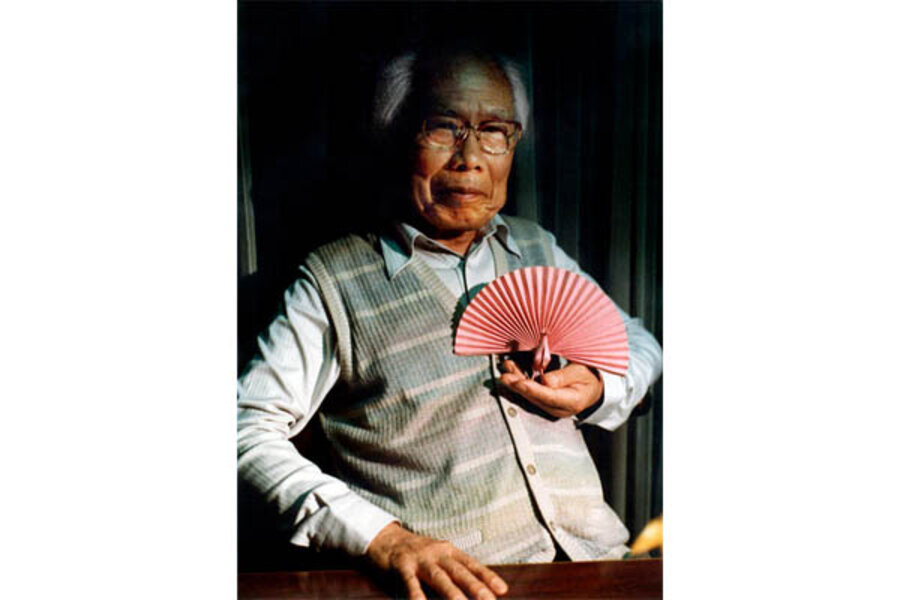Akira Yoshizawa: the 101st birthday of an origami master
Loading...
“In his hands, flat sheets sprang to life as the birds of the air, the fish of the sea and the flora and fauna of the earth.”
That 2005 New York Times remembrance was in honor of master origamist Akira Yoshizawa, who would have turned 101 Wednesday. (See Wednesday’s Google Doodle honoring him.)
The art of paper folding was considered children’s play until the master paper folder from Tokyo raised it to a serious art form. He was inspired by the natural world and his paper masterpieces were known for their simple elegance and lifelike animation. Yoshizawa also pioneered a new form of origami known as wet folding, in which dampened paper was molded into sculptural forms. This technique allowed the origamist to coax more detail and animation into an origami figure.
“He folded graceful peacocks with lush fanned tails. He folded lumbering gorillas with protruding jaws and sunken eyes. He folded huge flying dragons, and an elephant so small it could stand atop a thimble. His origami was not so much folded paper as sculptural art…” the NYT wrote in his obituary.
Fortunately for his fans, the self-taught father of origami left a series of instructional books explaining the art of origami and ensuring his techniques would live on. Between 1954 and 1986 the master origamist wrote some 18 books on origami including “Origami Geijutsu-Sha,” “Origami Reader I,” “Origami Tokuhon, Vol. 1,” “Creative Origami,” “Origami Tokuhon, Vol. 2,” and “Origami Reader II.”
Yoshizawa’s books were notable for illustrating an innovative notation system that made origami instructions universally accessible and easy to follow. That system – using dotted lines to indicate folds and arrows to indicate the direction of the folds – is widely used today.
In March 1998, Yoshizawa exhibited his extraordinary origami at the Louvre in what was arguably the greatest origami exhibition ever held. He crafted an estimated 50,000 pieces of origami over the course of his 93 years (he died on his 94th birthday). Google is marking the artist’s centennial with a signature origami-inspired Google Doodle Wednesday.
Husna Haq is a Monitor correspondent.







